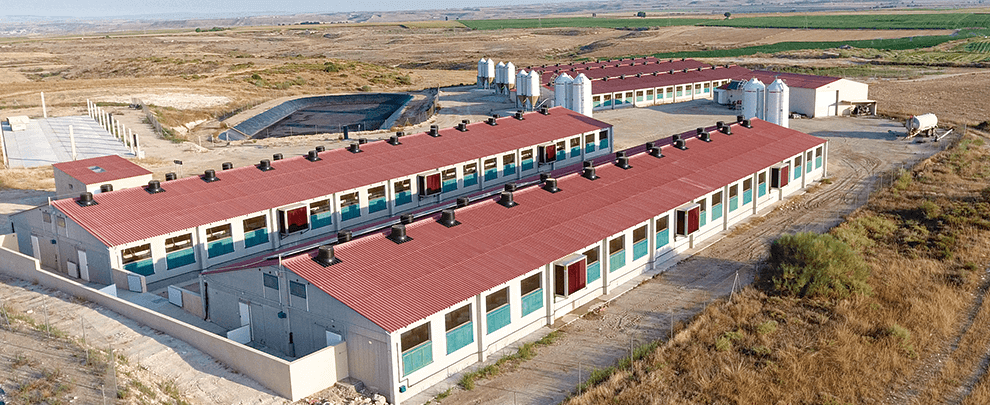Blog
Blog

Keys to improve energy efficiency in fattening farms
26th November 2020 - News
In recent years, the pig herd has experienced strong growth, and it is increasingly common to find pig farms, especially in the Aragonese community (Spain).
The fattening phase is the last link in the production chain and, although it is considered the simplest, it is of vital importance since future profits or losses in the process depend on it. Therefore, it is important that fattening farms have advanced technological equipment and adapt to continuous innovations to guarantee animal well-being and achieve the highest level of production.
Valero Villanova, a producer with more than 15 years of experience and owner of the new Agropecuaria los Valls fattening farm, has observed how the demand for pork has grown. The pork sector faces a challenge and with the aim of meeting this demand and having sustainable and responsible production, Valero Villanova has opted to incorporate new measures in its facilities.
The Los Valls agricultural farm is an example that adapts to the new challenges of the sector in terms of sustainability. It is located in the municipality of Candasnos (Bajo Cinca-Huesca), it is integrated with the Vall Companys company and constitutes Valero's second fattening center. It is an isolated farm, since it does not have an electricity company supply. Energy production occurs on the farm for the proper functioning of all facilities.
To guarantee ideal environmental conditions, it is essential to maintain precise control of the following parameters:
- Lighting plays an important role in stimulating feed intake after weaning. This core features dual-chamber polyester windows in blue, softening the lighting and creating an optimal light climate that allows piglets to find their feed and water more easily, resulting in greater feed intake. All of this contributes to healthy animal growth and an optimal feed conversion rate.
- To guarantee a good climate inside the farm, control is carried out using chimneys on the roof and windows in the walls, automatic winches with a control box and temperature probes. This climate control system has internet communication to control the room environment from a smartphone.
- Heating is also one of the essential elements. The farm has underfloor heating, controlled from the climate control box with the temperature probes inside the house.
- Forced ventilation with cooling in summer has been designed using cooling huts with a 15 cm thick cellulose panel and fully stainless high-flow fans installed on one side of the warehouse, with the possibility of group ventilation according to the temperature need inside the farm.
- Production of energy for summer ventilation, through high-efficiency photovoltaic solar panels installed on the roof of the warehouses by Solenver. The photovoltaic installation provides free, green energy to the cooling system.






